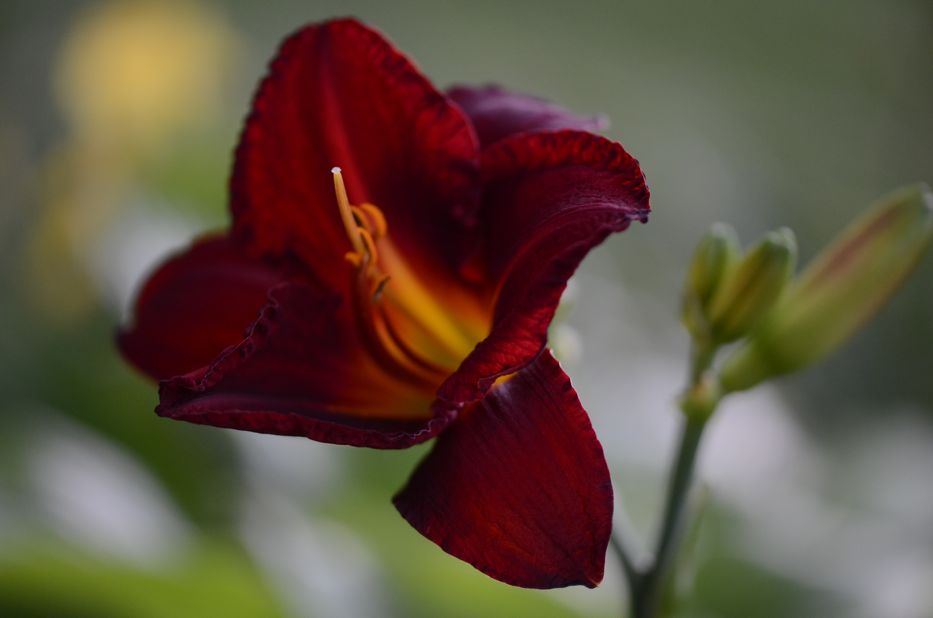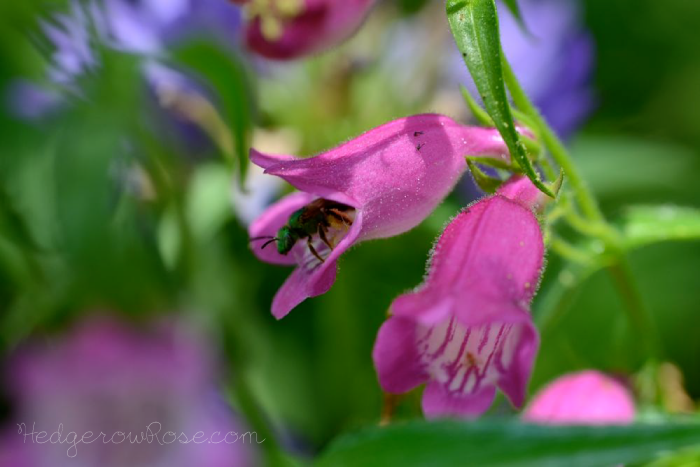Growing Lavender

A fragrant bouquet of Lavandula augustifolia
Lavender is my second favorite flower, and my first favorite scent. There, I’ve said it! If an evil wizard forced me to only grow two kinds of flowers it would be roses, of course, and lavender. I simply cannot imagine having a garden without it and that’s good because it’s also incredibly easy to grow and attracts beneficial pollinators like honeybees and butterflies. What works for some might not work for others, but here are some tips I’ve found have produced heavy crops of fragrant flowers for me every summer.
 Lavender loves to bask in the sunshine. Give it a home in your garden that is warm with fast draining soil.
Lavender loves to bask in the sunshine. Give it a home in your garden that is warm with fast draining soil.
Lavender can be started from seed, but when I’ve done this in the past, I found it took way to long for the seedlings to become sturdy enough to add to our zone 6 garden. Instead, I buy them in small, 4″ pots in spring; They’re still pretty economical that way and quickly grow to a mature size. EDIT: I’ve recently begun propagating my own lavender which saves a bundle! I’ve had wonderful success with planting my lavender in raised beds in a mix of composted leaf and grass clippings and composted cow manure. You can use your own compost, or if you don’t have enough (like I did when I was just planting out the garden) can order a delivery by the cubic yard from your local landscaping company. Whatever you choose, you want it to drain easily as lavender doesn’t like wet feet. (The raised bed technique also heats the soil up quickly which is good if you live in a cold winter climate like I do.) I plant my lavender in the warmest location of our garden in all-day-full-sun. Trying to grow lavender in a shadier location just doesn’t produce enough flowers for me but maybe someone in a hotter climate has a different technique that works for them. In the spring (late spring because lavender takes a while to recover from winter), I prune back by about 1/3, also removing any dead wood, to promote new growth and lots of flowers. I make sure the baby lavender plants are well-watered until they are established (mature lavender won’t need this kind of fussing) and then around late June/July when it blooms, I harvest some of the flowers for me and leave the rest for the bees. I never fertilize. EDIT: I do fertilize my lavender babies grown from cuttings while they are still in their nursery pots. Read more about that here. Later summer, I get another flush of flowers, not as heavy as the first, but still a nice smattering. I leave those stalks on over winter letting the seeds drop, and wait for plants to pop up in random places in my garden the following year. Lavender is a short-lived perennial and can get woody and non-productive after a few years. If that’s the case, dig it out, replenish the soil, and replace with a new plant.
 Lavender is best harvested when the buds are still tightly formed
Lavender is best harvested when the buds are still tightly formed
In my garden I currently have 5 different types of lavender growing. There are some that have fancy scalloped leaves, some that have flowers with little tufts at the top, and some with white flowers instead of the usual purple. Some varieties are more strongly scented than others; a couple of good varieties are Munstead Wood and Hidcote. If you plan on harvesting your lavender for medicinal or culinary purposes make sure it has never been exposed to pesticides/herbicides, of course. I like to harvest mine in bundles, wrap tightly with a ribbon, and hang upside down in a cool, dry place to scent a room. In the garden, I can’t help but brush my fingers against the leaves, or carry a sprig around the garden with me (lavender deters insects!) to carry the scent with me as I work.







Great Post. Have never tried Lavender but would love to. Would probably do well in our zone 7B garden. I’m told it makes a great companion for roses….. BTW, #RoseChat is this Saturday 7/23 @ 3 p.m. EST on Twitter. Guest host is Paul Zimmerman, a noted Rosarian. Hope you can join us!
Thank you for this lol.. um how big is a mature plant…
With our winters being so cold and having so much dieback, ours have never gotten much bigger than 1-2′ but I’ve seen lavender get much larger–like a small shrub!
Thank you
I just purchased 4″ pots of very young lavender. Should I wait to plant them permanently outside in the spring. The Fall, just two months away brings very cool weather. I am in Tenn.
Thank you!
Hi Martine! You have the option of potting them up and bringing them indoors for the winter, but would you be able to provide strong, consistent sunlight until spring? If it were me, I would plant them in the garden now while making sure to put them in a site that received protection from cold, winter winds and in a warm pocket. (A south-facing position against the house is ideal.) Last winter was particularly cold, as you know, and I lost many of our mature lavender that were planted out in the garden. The lavender that was planted with the protection from the wind and closer to the warmth of the house survived. Good luck!